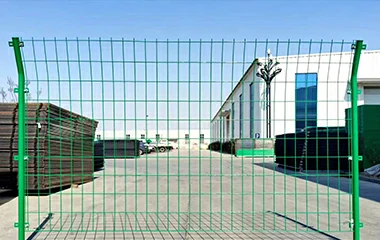 TEL:
+86-13102802206
TEL:
+86-13102802206
 Email:
fencenetting@china.com
Email:
fencenetting@china.com
 Language
Language
 TEL:
+86-13102802206
TEL:
+86-13102802206
 Email:
fencenetting@china.com
Email:
fencenetting@china.com
 Language
Language


The Versatility of Gabion Cages A Modern Solution for Erosion Control and Landscaping
Gabion cages have emerged as a practical and aesthetically pleasing solution in various construction, landscaping, and environmental applications. These wire mesh cages filled with rocks, stones, or other materials have gained popularity due to their versatility, durability, and effectiveness in controlling erosion while enhancing the beauty of outdoor spaces.
Understanding Gabion Cages
At their core, gabion cages are rectangular or cubic structures made from welded or woven wire mesh. They are typically filled with local materials such as stones, gravel, or even recycled concrete, creating permeable barriers that allow water to flow through while maintaining structural integrity. These cages can vary in size, from small units used for decorative purposes to large ones used in engineering projects.
Applications in Erosion Control
One of the most significant advantages of gabion cages is their ability to control soil erosion. They are commonly employed in areas prone to heavy rainfall, flooding, or riverbank erosion. By placing gabion walls or retaining structures along banks and hillsides, the natural flow of water is disrupted, which helps to prevent soil displacement. The weight and structural design of the cages ensure stability, allowing them to withstand the forces of water while promoting vegetation growth in the area, which in turn aids in binding the soil.
Aesthetic Appeal in Landscaping
Beyond their practical applications, gabion cages have found a place in landscaping as a design element. Landscape architects appreciate their rustic charm and adaptability to various environments. They can be used in features such as retaining walls, garden borders, and seating areas. A gabion wall can serve as a striking backdrop in a garden, seamlessly blending with the natural landscape while providing functional benefits.

The combination of natural stones in the cages allows for creative expression. Homeowners and designers can choose different types of rock, plan the arrangement, and even incorporate lighting features to enhance visual appeal. Over time, as vegetation grows over or around the cages, they can become even more integrated into the landscape, creating a more organic and inviting atmosphere.
Environmental Benefits
Gabion cages also offer environmental advantages. Because they are constructed using natural materials, they contribute to sustainability. Unlike traditional concrete walls, gabion structures allow water to drain and reduce runoff, which can mitigate flooding risks. They promote biodiversity by encouraging plant growth and providing habitats for small animals and insects. Additionally, the use of local stone reduces transportation costs and the carbon footprint associated with building materials.
Installation and Maintenance
Installing gabion cages is relatively straightforward. They can be assembled on-site, and the filling process can utilize accessible materials, making them a cost-effective option for construction projects. Maintenance requirements are minimal; occasionally, inspections are necessary to ensure structural integrity, particularly after severe weather events. Over time, the stones may settle, but this can often enhance the natural appearance of the structure.
Conclusion
Gabion cages represent a remarkable fusion of functionality, sustainability, and aesthetic appeal. Their ability to control erosion, promote ecological health, and serve as attractive landscape features has solidified their place in modern construction and landscaping practices. As more people recognize their benefits, gabion cages will undoubtedly play an increasingly important role in shaping resilient and beautiful environments for generations to come. Whether used for protecting vulnerable landscapes or enhancing the charm of a garden, gabion cages offer endless possibilities for innovative design solutions.